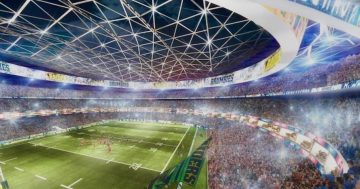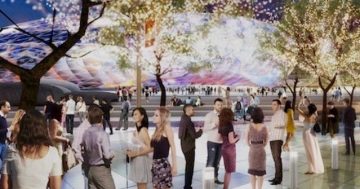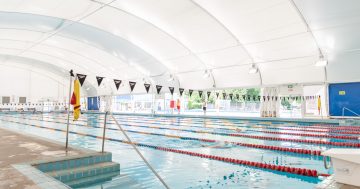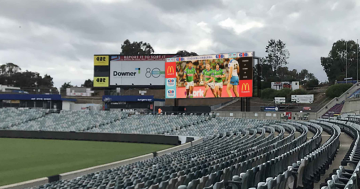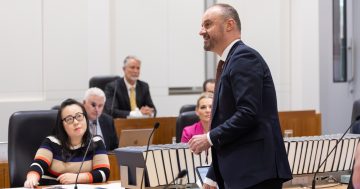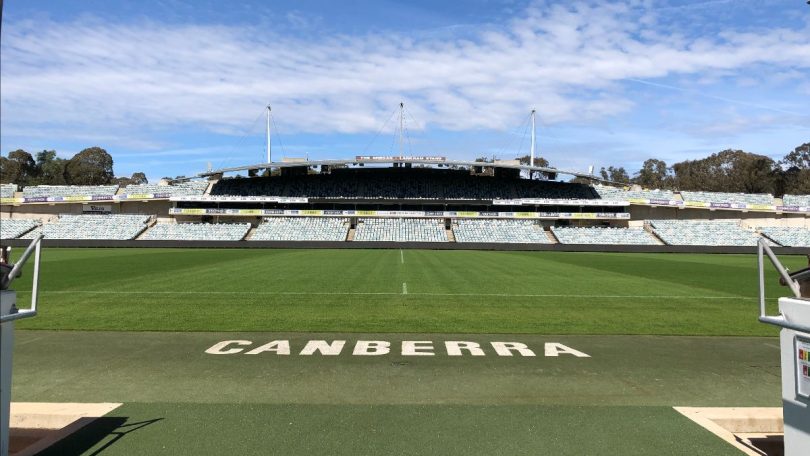
Canberra Stadium’s future is being clouded by Federal Government talk about redeveloping the site. Photo: Supplied.
Building a rectangular stadium on the Civic pool site would require a bespoke design and come with several planning challenges, but would have economic and transport advantages over Exhibition Park, according to a government-commissioned study of the two proposals.
With the ACT Government lease at Bruce’s Canberra Stadium expiring in 2024, and the Federal Government considering options for redevelopment, the ACT Government is exploring options for a replacement stadium and has identified Civic and EPIC as locations.
The Arup study found both proposals were achievable and found little to split them when it came to the eye-popping cost.
Both sites would cost north of half a billion dollars at current estimates, about $638m by 2027 and more than $700 million by 2032, numbers that would require private sector involvement.
The study estimates it would take around six to seven years for construction at EPIC from business case to completion, with Civic taking slightly longer.
Arup’s brief was to compare the two sites based on a capacity of at least 25,000 seats, roughly north-south field orientation, and a fully enclosed roof, with consideration of a 100 per cent dripline roof.
It looked at four bowl designs for the smaller Civic site, which would have to impinge on an upgraded Parkes Way, but only a standard design for the more spacious EPIC site.
The more constrained site would require a design unlike any other in Australia, but that would also give it a unique identity, the study said.
The study settled on the fourth design and found that a 25,000 seat stadium can fit on the site with the north and south grandstands single-tiered and the east and west grandstands two-tiered.
A well proportioned upper and lower tier would mean avoiding long travel distances to seating, food and beverage areas and toilets, and no northern sun shadowing.
But a fully enclosed roof would cost more at EPIC due to the significantly longer spans generated by the enlarged east and west stands.
The Civic proposal would also need amendments to the National Capital Plan (NCP) as the roof will be higher than the current limit of 25 metres and ‘stadium’ is not a listed land use.
The southern site boundary will need to move south into the Parkes Way corridor by up to 12 metres and a concrete barrier and fencing may be required on the Parkes Way boundary until Parkes Way stage five is complete in about 2030.
Any future upgrades will need to be coordinated with the design development of the stadium.
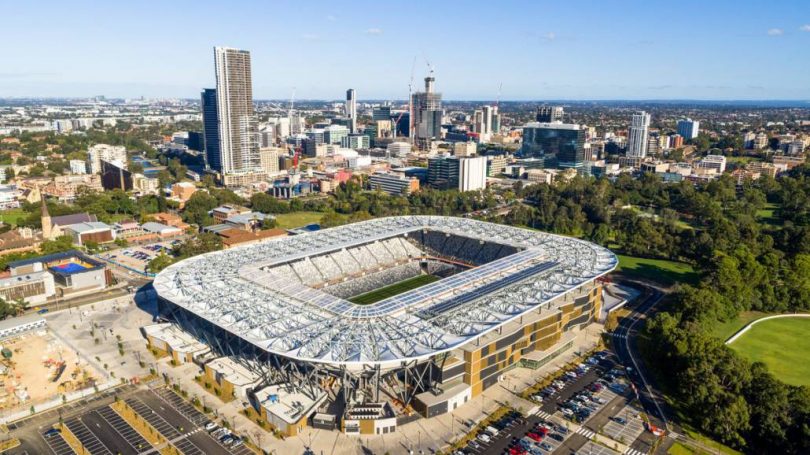
Parramatta’s Bankwest Stadium. Photo: Bankwest Stadium.
Crowd, traffic, security and noise management, particularly in relation to nearby residential developments, will also pose greater challenges than EPIC.
The study did not provide for onsite parking, relying on the number of city spaces, which is higher than current provisions in the Canberra Stadium precinct.
But the study says the central Civic site has easy road access, including Parkes Way, and public transport links such as the city light rail terminus, bus interchange, and future light rail along Constitution Avenue.
It also has greater economic potential, being so close to other city venues, with more possibilities for drawing people to the site on non-game days than the more remote EPIC location.
EPIC’s main attractions include more space to play with, a less complicated build using a Bankwest-style, continuous bowl design, and fewer planning hurdles.
Onsite parking can be utilised, but transport options are limited to light rail.
The study looked at three sites but settled on an area near the EPIC and Racecourse light rail stop and the future Sandford Street light rail stop, which would require the harness training track to be moved.
“Overall these venues are offering very different outcomes,” the study concludes. “One is a bespoke urban venue which will have strong links back to its surrounding context and has the potential to tap into the existing neighbouring network of complementary facilities and supporting industries.
“The other is a more typical design on an open site, with less operational complexity but also less potential to give back and engage with its surrounding context.
“What is important to note is that both are feasible and both address the key requirements of the brief.”
But in terms of government priorities, the stadium proposal sits firmly behind the development of the Civic cultural precinct and the new Canberra Theatre, but without a private sector backer, it remains a distant prospect.












